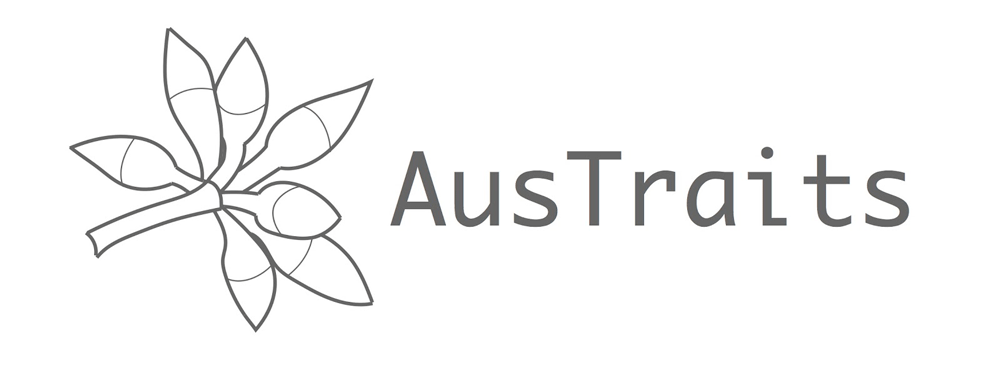Conservation Status
Online Resources
Occurrence records map (0 records)




































Datasets
datasets have provided data to the Atlas of Living Australia for this species.
Browse the list of datasets and find organisations you can join if you are interested in participating in a survey for species like Dysphania carinata ()
Types
Specimens
Images
Misidentified

Names and sources
| Accepted Name | Source |
|---|---|
| Dysphania carinata () |
|
| According to:Council of Heads of Australasian Herbaria (2008), Australian Plant Census | |
| Published in:Mosyakin, S.L. & Clemants, S.E. (2002), Ukrainian Botanical Journal 59(4) [382] | |
| Synonym | Source |
|---|---|
| Chenopodium carinatum var. holopterum heterotypic nom. inval. |
|
| Published in:Aellen, P. (1933), Die Arten der Sect. Orthosporum R. Br. der Gattung Chenopodium L. Verhandlungen der Naturforschenden Gesellschaft in Basel 44 [312-313] | |
| Chenopodium holopterum () heterotypic |
|
| Published in:Probst, R. (1928), Dritter Beitrag zur Adventivflora von Solothurn und Umgebung. Mitteilungen der Naturforschender Gesellschaft Solothurn 8 [57] | |
| Chenopodium carinatum var. carinatum homotypic |
|
| Published in:Black, J.M. (1922), Additions to the Flora of South Australia. No. 20. Transactions and proceedings of the Royal Society of South Australia 46 [566] | |
| Chenopodium carinatum f. foliosum heterotypic |
|
| Published in:Domin, K. (1921), Beitrage zur Flora und Pflanzengeographie Australiens. Bibliotheca Botanica 22(89) [619] | |
| Chenopodium carinatum f. carinatum homotypic |
|
| Published in:Domin, K. (1921), Beitrage zur Flora und Pflanzengeographie Australiens. Bibliotheca Botanica 22(89) [619] | |
| Chenopodium cristatum var. holopterum heterotypic |
|
| Published in:Thellung, A. (1919), Beiträge zur Adventivflora der Schweiz (III). Vierteljahrsschrift der Naturforschenden Gesellschaft in Zurich 64 [724] | |
| Chenopodium cristatum f. holopterum heterotypic |
|
| Published in:Thellung, A. (1919), Beiträge zur Adventivflora der Schweiz (III). Vierteljahrsschrift der Naturforschenden Gesellschaft in Zurich 64 [724] | |
| Blitum glandulosum var. parvifolium () heterotypic |
|
| Published in:Moquin-Tandon, C.H.B.A. in Candolle, A.L.P.P. de (ed.) (1849), Salsolaceae. Prodromus Systematis Naturalis Regni Vegetabilis 13(2) [82] | |
| Blitum carinatum () homotypic |
|
| Published in:Moquin-Tandon, C.H.B.A. in Candolle, A.L.P.P. de (ed.) (1849), Salsolaceae. Prodromus Systematis Naturalis Regni Vegetabilis 13(2) [78, 81-82] | |
| Blitum carinatum () homotypic |
|
| Published in:Steudel, E.G. von (August 1840), Nomenclator Botanicus Edn. 2, 1(1-2) [210] | |
| Ambrina carinata var. parvifolia heterotypic |
|
| Published in:Moquin-Tandon, C.H.B.A. (1840), Chenopodearum Monographica Enumeratio [42] | |
| Ambrina carinata () var. carinata homotypic |
|
| Published in:Moquin-Tandon, C.H.B.A. (1840), Chenopodearum Monographica Enumeratio [42] | |
| Ambrina carinata () homotypic |
|
| Published in:Moquin-Tandon, C.H.B.A. (1840), Chenopodearum Monographica Enumeratio [41] | |
| Salsola carinata () homotypic |
|
| Published in:Sprengel, C.P.J. (1824), Systema Vegetabilium Edn. 17, 1 [923] | |
| Chenopodium carinatum homotypic |
|
| Published in:Brown, R. (27 March 1810), Prodromus florae Novae Hollandiae et insulae Van-Diemen, exhibens characteres plantarum quas annis 1802-1805 [407] | |
| Common Name | Source |
|---|---|
| Crested Goosefoot preferred Australia Australia |
| Name | Source |
|---|---|
| Dysphania carinata () accepted |
|
| Identifier | Source |
|---|---|
| https://id.biodiversity.org.au/name/apni/198680 Scientific Name current |
|
| https://id.biodiversity.org.au/node/apni/2896079 Taxon current |
|
| http://id.biodiversity.org.au/node/apni/2896079 Taxon unknown |
|
| https://id.biodiversity.org.au/instance/apni/752681 Taxon Concept current |
|
Classification
- kingdom
- Plantae
- phylum
- Charophyta
- class
- Equisetopsida
- subclass
- Magnoliidae
- superorder
- Caryophyllanae
- order
- Caryophyllales
- family
- Chenopodiaceae
- genus
- Dysphania
- species
- Dysphania carinata
Charts showing breakdown of occurrence records (0 records)
Name references found in the Biodiversity Heritage Library
| Data sets | Licence | Records |
|---|

The trait data shown here are a selection from AusTraits, an open-source, harmonised database of Australian plant trait data, sourced from individual researchers, government entities (e.g. herbaria) or NGOs across Australia. Traits vary in scope from morphological attributes (e.g. leaf area, seed mass, plant height) to ecological attributes (e.g. fire response, flowering time, pollinators) and physiological measures of performance (e.g. photosynthetic gas exchange, water-use efficiency.)
These traits are a sampler of those available in AusTraits. The data presented here are summary statistics derived from all field-collected data on adult plants available from AusTraits. Since the data presented are derived from the wide variety of sources in AusTraits, both the numeric trait statistics (min, mean, max) and categorical trait summaries (frequency of each trait value) that have been merged together could include data collected using different methods. The values presented for this species may reflect a summary of data from one or many sources, one or many samples from one or many adult plants at one or many locations. They may therefore differ from those presented elsewhere on the ALA platform and users are encouraged to download a spreadsheet of the full AusTraits data for this species via the download CSV button to view the accompanying details about the data sources before further use.
Categorical Traits
* Data sources in AusTraits report multiple values for this trait, suggesting variation across the taxon's range and life stages. Please download the raw data with information about the context of data collection to assess whether they are relevant to your project.| Trait Name | Trait Value | Definition |
|---|
Numeric Traits
| Trait Name | Min | Mean | Max | Unit | Definition |
|---|

